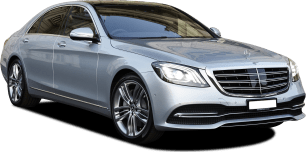Once you dip under three and half seconds for the sprint from 0-100km/h strange things happen to your field of vision. Faced with that kind of acceleration, it instantly narrows, your brain instinctively focusing attention on the road ahead because it senses something borderline unnatural is going on.
Claiming just 3.4sec for the DBS Superleggera to hit triple figures (and 0-160km/h in 6.4sec!) we felt obliged to validate the number, and sure enough peripheral vision blurred into nothingness as this brutal machine delivered its shock and awe performance.
And the aural accompaniment is suitably intense, thanks to the electronically-controlled (stainless steel) exhaust, with active valves and quad tail pipes, orchestrating the brilliantly guttural and raucous ‘sound character.’
Pure pulling power is immense with all 900Nm of maximum torque available from just 1800rpm all the way to 5000rpm. Mid-range urge is prodigious, and Aston claims the DBS Superleggera will blast from 80-160km/h (in fourth gear) in 4.2 seconds. That’s a number I didn’t verify, but I’m not going to doubt it.
It might share essentially the same bonded aluminium chassis, but thanks to its carbon-rich bodywork the DBS Superleggera is 72kg lighter than the DB11, with a ‘dry’ weight (no fluids) of 1693kg. The engine is also set low and far back in the chassis, to the point where it’s actually a front-mid location, delivering a 51/49 front/rear weight distribution.
Suspension is double (forged alloy) wishbone front, multi-link rear, with adaptive damping standard, and there are three set-up stages available via the flick of a switch on the left-hand side of the steering wheel.
On the opposite side of the wheel a similar mode control allows you to cycle through ‘GT’, ‘Sport’, and ‘Sport Plus’ settings, tuning various functions including the throttle map, exhaust valves, steering, traction control, and shift response. Steering is speed-dependent electrically-assisted.
Brakes are professional grade vented carbon ceramics, with thumping 410mm rotors at the front clamped by six-piston calipers, and 360mm discs at the rear sporting four piston calipers.
Managing this car’s phenomenal thrust as it morphs into lateral g-force, is a surprising experience. Of course, it grips like a Trump handshake, with a specific ‘A7’ version of Pirelli’s ultra-high performance P Zero tyre on a 21-inch forged alloy rim at each corner.
The 265/35s at the front are big, and monstrous 305/30s at the rear deliver a strong mechanical connection with the road. But it’s the car’s steering and overall agility that’s unexpected.
It doesn’t feel like a beefy 2+2 GT. And while it’s not in the 911’s league when it comes to response and dynamic feedback, it’s a long way down that road.
I found Sport and the middle suspension setting to be the backroad sweet spot, and with the seven-speed auto in manual mode the lightweight DBS simply lights up.
Shifts on the way up the ratios via proper alloy paddles in manual mode are rapid and precise, and the car remains stable and balanced, yet entertainingly athletic in enthusiastic cornering.
When squeezed hard on initial application carbon ceramic brakes don’t ‘bite’ in the same way steel discs do, but the system’s ability to rapidly wash off speed, while the car remains in a steady state, is exceptional.
At the same time, shifts down through the gears are accompanied by a variety of aggressive pops and bangs (a feature of Sport and Sport Plus modes) and the DBS points accurately yet progressively into a bend.
Road feel is excellent, the sports front seat is grippy and comfortable, and the car’s ‘Dynamic Torque Vectoring’ (via braking) system chips in to ensure understeer is kept in check.
In a more sedate mode, thanks largely to the active dampers, the Superleggera is surprisingly comfortable around town, despite the big rims and low-profile rubber.
Under the heading of ‘random thoughts’, the simple interior layout (including the spot-on digital instrument cluster) is great, the auto stop-start is a little jerky on restart, and including the front air dam, ground clearance under the nose is only 90mm, so be mega-careful in and out of driveways, or prepare yourself for the sound of scraping carbon (happily avoided this time around).













































































